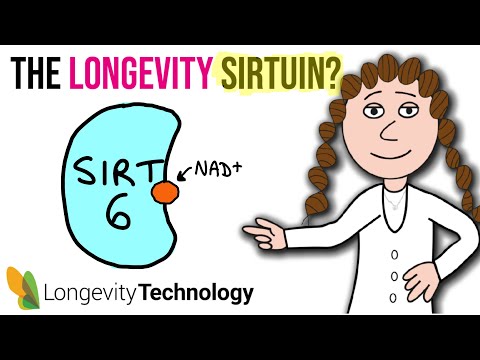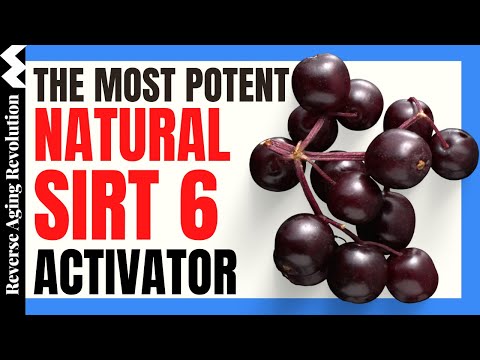I was wondering what the views are on the Sirt6 Activator from Do Not Age. It is expensive, but Sirtuin 6 promotes DNA repair, protects telomeres, supports genomic stability and reduces inflammation. Any views please?
Active ingredient is Focus vesiculosus.
When added to skincare products Fucus Vesiculosus extract reduces wrinkle depth, corrects small imperfections, and improves skin texture . Its mechanism of action has not been fully studied yet, but scientists believe that Fucus vesiculosus extract blocks certain enzymes that cause skin damage.
Fucus vesiculosus, known by the common names bladderwrack, black tang, rockweed, sea grapes, bladder fucus, sea oak, cut weed, dyers fucus, red fucus and rock wrack, is a seaweed found on the coasts of the North Sea, the western Baltic Sea and the Atlantic and Pacific Oceans. Wikipedia[
Fucoidan (from Fucus vesiculosus) appears to actually be an HDAC inhibitor.
As people know I think HDAC inhibitors are good things. I think they cause a greater expression of HDAC whilst reducing the HDAC effects (as the body creates more of them because they are not functioning at normal levels.) The SIRT genes are HDAC Class III.
Hence describing it as an SIRT6 activator is probably not the case.
Bladderwrack Alcohol-Free Liquid Extract, Bladderwrack (Fucus Vesiculosus) Glycerite Hawaii Pharm Natural Herbal Supplement 2 oz Amazon.com
Will try to add it to my creams.
Thanks for the insights Lara and John. Much appreciated!
We had a related discussion here. IMO the research is too preliminary to spend that kind of money, though allegedly Gorbunova is running mouse lifespan studies as we speak.
The raw algae are cheap, but strongly flavored so it’s difficult to use large amounts as food. You can get extracts of unknown quality at reasonable prices.
I bought bladderwrack supplements but discontinued usage when I found that the algae that it comes from has a high amount of heavy metals.
I would hope that DNA would remove any heavy metals but I am not sure.
Berries can be used. They are good sources of cyanidins.
https://www.nature.com/articles/s41598-018-22388-5
Natural polyphenols as sirtuin 6 modulators
Purple corn is also a good supplement. Its anthocyanin content bests blueberries.
https://www.herbalgram.org/resources/herbalgram/issues/65/table-of-contents/article2779/
I mIx a teaspoon of purple corn powder with a half glass of pomegranate juice. I only take it three times a week, because of the sugar in pomegranate juice.
I think the timestamp is off in the show notes, but i think here is a discussion that maybe sirtuins aren’t a good human target
I think Charles Brenner is right on the sirtuins. He tends to go overboard in support of his pet (patented) molecule NR, but there are arguments for NR. Charles, however, is overly negative about much of longevity science (apart from NAD boosting where IMO he is overly positive, but people like their pets).
The SIRtuins are HDAC Class III and a lot of HDAC inhibitors are pro longevity - go figure.
6.8% lifespan extension, would be statistically insignificant in science world? I think anything that has to do with Sirtuin activation would have very little or no meaning fun lifespan benefits, it is another NMN thingy. All these scientists are sponsored by supplement companies that are pushing these things for what it is worth.
Nir Barzilai, MD joins Israeli Sirt6 startup.
Longevity focused biotech SIRTLab emerges from stealth, aiming for first human trials of SIRT6-boosting therapeutic in 2024.
Dr. Brad takes a piss on Sirt6 activators. Not enough research to seriously consider this expensive supplement.
Does any1 know what to make of this paper ?
Well I honestly have no idea about the “SIRT6 activator supp , but ik exercise increases SIRT6 . There must be some key signaling involved here , I bet we could recapitulate it to activate SIRT6 without actually exercising .
It is quite an old paper. It remains, however, that it is the details of what happens with transcription that need further study. I think the question as to what happens when an HDAC deacetylates the histone at a point close to where RNA Polymerase II is active is an interesting, but hard question to answer.
We know that HDAC inhibitors affect transcription and we also know there is an issue with alternative splicings.



